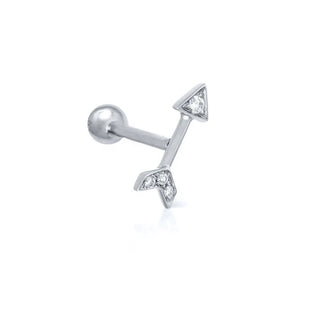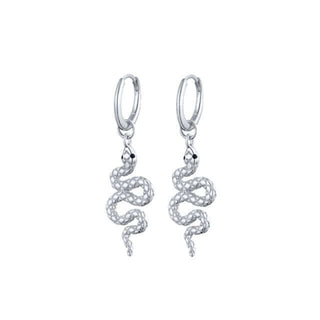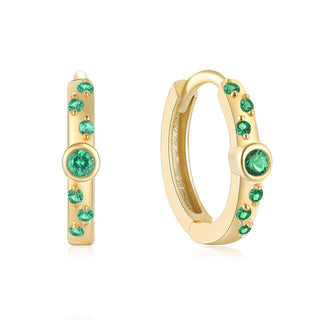
The 4 C's of Diamonds: A Complete Guide
Diamonds are undoubtedly captivating, but what exactly makes one diamond different from another? The answer lies in the 4C's—a universally recognised grading system that evaluates a diamond's quality.
The Four C's system evaluates diamonds based on their Cut, Colour, Clarity, and Carat Weight, hence the name. Each of these factors contributes to a diamond's beauty and value. Understanding the Four C's provides far more insight into a diamond than simply considering its price, as two diamonds of equal value can differ significantly in their characteristics. Familiarising yourself with the Four C's enables you to navigate through the vast array of available diamonds by focusing on what matters most to you. For instance, if you prioritize sparkle over size or desire a flawless diamond, the Four C's can guide you towards the perfect choice.

1. Carat
To put it simply, diamond carat weight measures how much a diamond weighs.
Diamonds are weighed with exceptional precision, using metric carats (abbreviated as "ct"). One metric carat equals 0.2 grams, or 200 milligrams. The metric carat is divided into 100 points. A point is one hundredth of a carat.
For diamonds weighing under a carat, their weights are typically expressed in points. For instance, a diamond weighing 0.23 carats might be referred to as "twenty-three points," or simply called an "twenty-three pointer." Diamond weights exceeding one carat however, are typically conveyed in carats and decimals. For instance, a 1.03-carat diamond would be articulated as "one point oh three carats" or simply "one oh three."
Certain weights are deemed "magic sizes," including half a carat, three-quarters of a carat, and a full carat. Visually, distinguishing between a 0.99 carat diamond and one that weighs a full carat is challenging. However, the price disparities between the two can be substantial.
Visualising a Carat
Explore the interactive tool below. (If you cannot see the tool, please refresh the page) It is designed to let you compare two different diamonds side by side and see how their carat weights translate into visual appearance. Allowing you to make informed decisions with confidence by visually assessing the size differences between diamonds before making your choice.

2. Cut
Cut is often misunderstood as the shape of the diamond, but it actually refers to how the stone's facets are arranged. Crafting a stone to optimise its proportions, symmetry, and polish requires precise artistry and skill, resulting in the mesmerising play of light unique to diamonds.
The GIA Cut Grading System for the standard round brilliant diamond evaluates seven components, including brightness, fire, and scintillation for overall face-up appearance, as well as weight ratio, durability, polish, and symmetry for design and craftsmanship. The quality of the cut significantly influences the diamond's ultimate beauty and worth.
To find out more about each grading and the characteristics of a diamond of a given grade, check out the interactive tool below.

3. Colour
Ironically, when grading a diamond, the colour refers to the lack of colour! This is because a chemically pure and structurally perfect diamond has no hue. Diamonds range from D-Z in colour, with D being totally colourless, or the finest white and Z having a yellow or brown hue to the naked eye. Nobody really knows why they started at 'D' instead of 'A', but many like to think that it represents D for Diamond.
When purchasing a diamond we would recommend choosing a diamond between a 'D' and an 'H' colour. Diamonds that are graded between 'D-F' are considered colourless diamonds, these are rarer and come with a more premium price tag. 'G & H' graded diamonds are considered 'near colourless' which means that to the naked eye they still appear to have little to no hue.
Diamonds outside of this colour scale are considered fancy-colour diamonds - these can be a variety of colours such as yellow, blue and pink.

4. Clarity
Diamond clarity is determined by the presence of internal characteristics (inclusions) and external characteristics (blemishes) formed during the diamond's creation due to intense heat and pressure. Evaluating clarity involves assessing the number, size, nature, and position of these features and how they affect the diamond's appearance.
No diamond is entirely free of imperfections, but higher clarity indicates greater purity. The GIA Diamond Clarity Scale categorizes diamonds into 6 main grades, with some further divisions, totaling 11 specific grades:
- Flawless (FL): No inclusions or blemishes visible under 10x magnification.
- Internally Flawless (IF): No inclusions visible under 10x magnification.
- Very, Very Slightly Included (VVS1 and VVS2): Inclusions are so slight that they are hard to see under 10x magnification.
- Very Slightly Included (VS1 and VS2): Inclusions are observable with effort under 10x magnification, categorized as minor.
- Slightly Included (SI1 and SI2): Inclusions are noticeable under 10x magnification.
- Included (I1, I2, and I3): Inclusions are obvious under 10x magnification and may affect transparency and brilliance.
The 5th C: Certification
At Strange the Jewellers, we prioritise transparency and trust when it comes to our diamonds. As an esteemed GIA approved retailer, we partner with premium diamond suppliers to source certified, traceable diamonds. Our certified diamonds will be accompanied by certification from renowned institutions such as GIA (Gemological Institute of America) or IGI (International Gemological Institute), reflecting our unwavering commitment to maintaining the highest standards of quality and authenticity.
When you purchase a diamond from us, you can rest assured that it has undergone thorough evaluation and grading by certified gemologists. The accompanying paperwork details the precise characteristics of the diamond, including its cut, colour, clarity, and carat weight, offering you a comprehensive understanding of its quality and value.
By choosing a GIA or IGI certified diamond from our collection, you are investing in a piece of exceptional quality that is backed by reputable grading and authentication processes. To further enhance your confidence in your diamond purchase, the certified stone is laser-inscribed with a unique identification code that corresponds directly to its certificate number. This permanent marking allows you to verify the diamond's identity and certification, providing added assurance and security.



